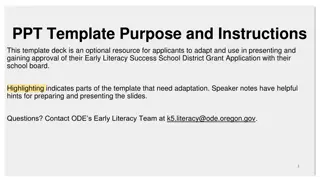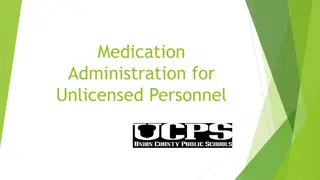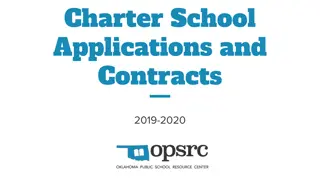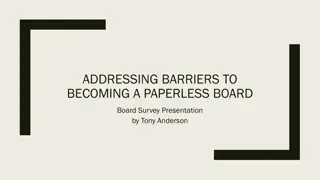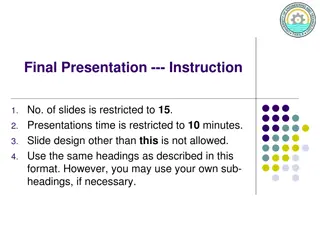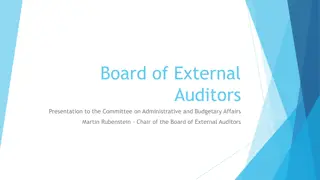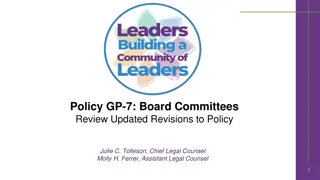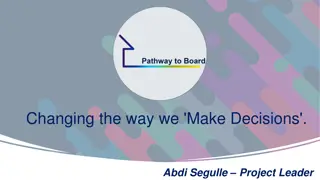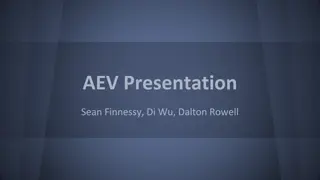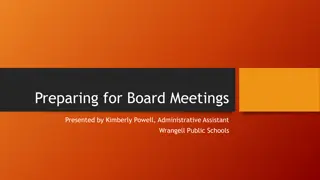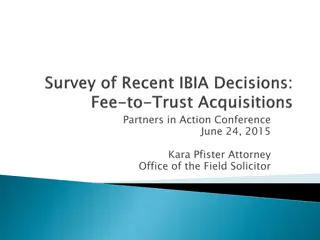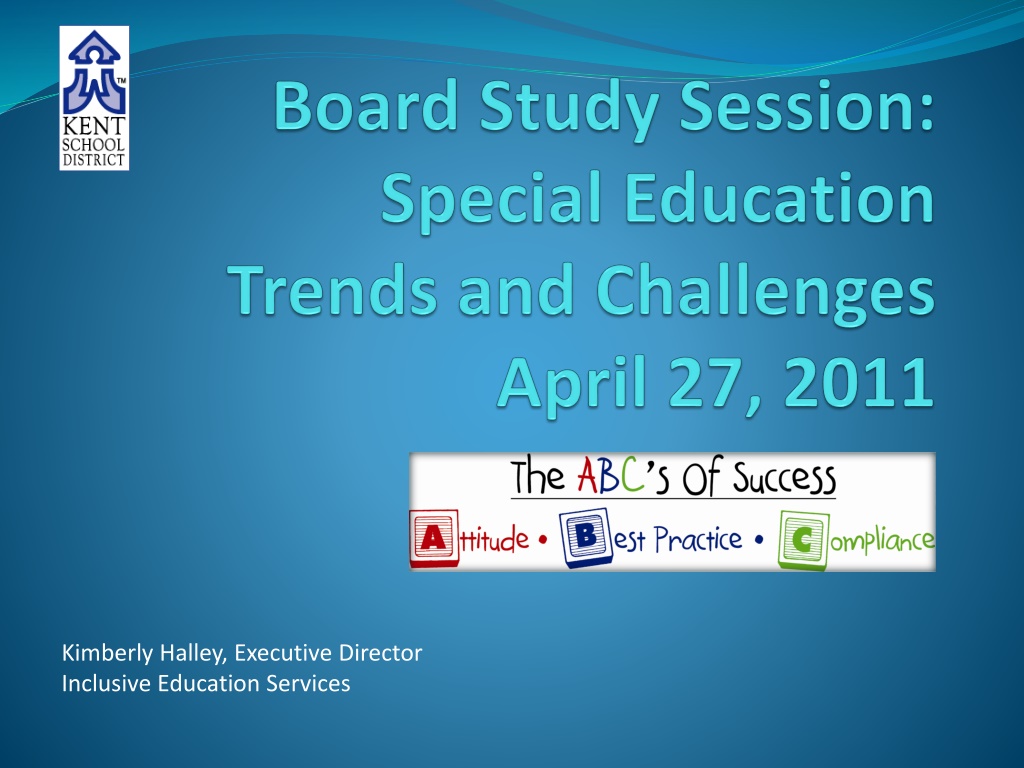
Inclusive Education Services Overview
Explore the framework of inclusive education services, including laws governing special education, Washington State performance data, research insights, enrollment trends, staffing shortages, agency staffing trends, and special education program budgets.
Download Presentation

Please find below an Image/Link to download the presentation.
The content on the website is provided AS IS for your information and personal use only. It may not be sold, licensed, or shared on other websites without obtaining consent from the author. If you encounter any issues during the download, it is possible that the publisher has removed the file from their server.
You are allowed to download the files provided on this website for personal or commercial use, subject to the condition that they are used lawfully. All files are the property of their respective owners.
The content on the website is provided AS IS for your information and personal use only. It may not be sold, licensed, or shared on other websites without obtaining consent from the author.
E N D
Presentation Transcript
Kimberly Halley, Executive Director Inclusive Education Services
Laws Governing Special Education Individuals with Disabilities Education Act (IDEA) Free and Appropriate Education (FAPE) Least Restrictive Environment Eligibility Determinations Individualized Programs and Placements Rules for the Provision of Special Education to Special Education Students (WAC) Elementary and Secondary Education Act (ESEA)
Washington State Special Education Performance Data 20 state indicators measure state/district performance Various areas of performance such as suspension rates and race, completing SE evaluations within the required timeline, or SE preschool outcomes Ethnicity of SE identified students and how much time SE students spend in GE settings
What the Research Says 1. High expectations for all students 2. Inclusion and access to core curriculum 3. Tiered Interventions 4. Utilizing Instructional Best Practices 5. Collaboration GE and SE 6. Ongoing Review of the Data 7. Targeted Professional Development
District and Special Education Enrollment 11.35% Dec 2005 26549 12.5% Dec 2006 25755 11.61% Dec 2007 27547 Sped Enrollment District Enrollment 12.02% Dec 2008 27612 11.62% Dec 2009 27520 12.80% Dec 2010 26607 0 5000 10000 15000 20000 25000 30000
Staffing Shortages Shortages in Speech Language Pathologists Occupational Therapists Physical Therapists School Psychologists SE Teachers Behavioral Assistants
5 Year Trend for Agency Staffing Year 06/07 07/08 08/09 09/10 10/11 FTE 31.7 34.5 25.8 12.8 12.5 Cost__________ 1,851,915.oo 2,067,432.00 1,369,084.00 322,653.00 391,780.50
Special Education Program Budgets 10/11 Total ARRA Program Budget $ 3,705,433 Total STATE Program Budget $ 25,862,517 Total FEDERAL Program Budget $ 5,064,721 TOTAL ALL PROGRAM BUDGETS $ 34,632,671 87.80% Total Employee Related Costs $ 30,407,318 12.20% Total Non-Employee Related Costs $ 4,225,353 100% Total All Program Budgets $ 34,632,671 Students receiving special education funding are general education students first and also receive basic education funding
09/10 Schools Meeting Adequate Yearly Progress Meeting adequate yearly progress or AYP in reading and math is a challenge for all schools. In 09/10, 15% of our schools met AYP in both academic areas. Met Proficiency Goal Student Group Reading Math Elementary (Grades 3-5) NO NO Middle School (Grades 6-8) YES YES High School (Grade 10) N<Required N<Required
What is Disproportionality? Over or under representation of a particular race or cultural group in a particular program or system such as special education Is race or ethnicity factors in the identification of children with disabilities or in disciplinary practices A nationwide issue
Identifying Special Education Students Prong 1: Presence of a Disability Prong 2: Educational Impact Prong 3: Need for Specially Designed Instruction Remember, cultural, economic, environmental disadvantages, lack of instruction in reading and math, and English proficiency issues need to be ruled out No racial or cultural bias in assessments
Weighted Risk Ratio Measure of risk that a student from a specific racial/ethnic group will be identified in a specific disability category compared to the risk of all other students being identified in that category 1.00 means students from that group are as likely to be identified as all others Example: 4.17 risk means 4.17 times more likely to be identified
Disproportionality Data Black (not Hispanic) STATE Black (not Hispanic) KENT DISTRICT Weighted Risk Ratio 11/09 Child Count* Weighted Risk Ratio 11/09 Child Count* Indicator 9: 07-08 08-09 09-10 07-08 08-09 09-10 All Disabilities 1.42 1.42 1.37 8475 1.45 1.46 1.44 477 Indicator 10: 07-08 08-09 09-10 07-08 08-09 09-10 Autism 0.62 1.03 0.68 14 0.79 0.81 0.75 297 Comm Dis 0.83 0.81 0.70 26 0.84 0.82 0.78 761 EBD 3.09 3.82 3.18 37 2.69 2.73 2.73 673 Health Imp. 1.20 1.14 1.07 76 1.41 1.44 1.40 1687 SLD 1.60 1.56 1.65 244 1.58 1.57 1.55 3748 MR 2.52 2.23 2.68 34 1.65 1.71 1.65 424
Disproportionality Data Hispanic STATE Hispanic KENT DISTRICT Weighted Risk Ratio 11/09 Child Count* Weighted Risk Ratio 11/09 Child Count* Indicator 9: 07-08 08-09 09-10 07-08 08-09 09-10 All Disabilities 1.11 1.19 1.17 456 0.99 0.99 1.02 18148 Indicator 10: 07-08 08-09 09-10 07-08 08-09 09-10 Autism 0.68 0.69 0.55 14 0.35 0.34 0.34 416 Comm Dis 0.92 0.59 0.70 032 0.93 0.93 0.95 2595 EBD 0.49 0.27 0.23 N<10 0.41 0.38 0.39 333 Health Imp. 0.44 0.58 0.60 54 0.51 0.52 0.52 1960 SLD 1.55 1.83 1.82 291 1.40 1.44 1.50 9828 MR 1.20 1.29 1.27 20 1.25 1.24 1.25 908
Disproportionality Data White STATE White KENT DISTRICT Weighted Risk Ratio 11/09 Child Count* Weighted Risk Ratio 11/09 Child Count* Indicator 9: 07-08 08-09 09-10 07-08 08-09 09-10 All Disabilities 0.93 0.89 0.86 1591 1.01 1.02 1.02 75759 Indicator 10: 07-08 08-09 09-10 07-08 08-09 09-10 Autism 1.62 1.38 1.65 114 1.80 1.82 1.92 5523 Comm Dis 1.08 1.16 1.09 185 1.14 1.16 1.17 12041 EBD 1.05 1.44 1.31 70 1.24 1.29 1.27 3470 Health Imp. 1.74 1.58 1.65 405 1.60 1.59 1.63 16871 SLD 0.75 0.67 0.60 619 0.78 0.77 0.75 26885 MR 0.00 0.67 0.64 58 0.00 0.76 0.79 2921
Disproportionality Data Asian/Pacific Islander STATE Asian/Pacific Islander KENT DISTRICT Weighted Risk Ratio 11/09 Child Count* Weighted Risk Ratio 11/09 Child Count* Indicator 9: 07-08 08-09 09-10 07-08 08-09 09-10 All Disabilities 0.55 0.54 0.54 5557 0.48 0.50 0.53 313 Indicator 10: 07-08 08-09 09-10 07-08 08-09 09-10 Autism 1.02 0.99 0.95 583 0.60 0.68 0.78 27 Comm Dis 0.73 0.71 0.75 1151 0.86 0.85 0.92 57 EBD 0.25 0.24 0.27 120 0.19 0.20 0.13 N<10 Health Imp. 0.35 0.34 0.35 717 0.31 0.31 0.25 32 SLD 0.50 0.48 0.48 1977 0.41 0.44 0.50 134 MR 0.65 0.66 0.61 264 0.86 0.84 0.71 17
Disproportionality Data American Indian/Alaska Native STATE American Indian/Alaska Native KENT DISTRICT Weighted Risk Ratio 11/09 Child Count* Weighted Risk Ratio 11/09 Child Count* Indicator 9: 07-08 08-09 09-10 07-08 08-09 09-10 All Disabilities 1.56 1.56 1.51 4211 1.79 1.75 2.20 71 Indicator 10: 07-08 08-09 09-10 07-08 08-09 09-10 Autism 0.56 0.63 0.64 113 1.05 1.01 1.02 N<10 Comm Dis 1.40 1.37 1.23 525 1.52 2.90 2.93 10 EBD 1.72 1.73 1.80 213 2.09 0.00 2.43 N<10 Health Imp. 1.31 1.29 1.27 696 1.70 1.67 1.75 12 SLD 1.79 1.81 1.77 1934 1.77 1.68 2.42 35 N<10 MR 1.93 1.97 1.93 225 2.90 1.44 1.49
Least Restrictive Environment Each student eligible for special education shall be provided to the maximum extent appropriate services in general education setting Removal only occurs if the disability is such that education in general education with supports cannot be achieved satisfactorily
Inclusion All students have a right to be educated alongside their peers in their neighborhood school Least restrictive setting is measured by time spent in general education Goal for all students is maximum time in general education if possible The individualized plan needs to justify in writing why a student is not being educated in the general education setting
80-100% of the School Day in General Education 5. Percent of students with IEPs aged 6 through 21: 5A. Spends 80-100% of the day in the regular class/environment (CEDARS LRE CODE 01) (Target % or Greater). 12/1/07 District 12/1/07 State 12/1/07 Target 12/1/08 District 12/1/08 State 12/1/08 Target 11/09 District 11/09 State 11/09 Target Meet Target? 33.7% 50.6% 49.90% 32.3% 50.2% 50.45% 36.1% 50.1% 51.0% no
40-79% of the School Day in General Education 5. Percent of students with IEPs aged 6 through 21 Table 2: 40 to 79% of the day in the regular classroom/environment (CEDARS LRE CODE 02) (no set targets). 12/1/07 LRE 02 District 12/1/07 LRE 02 State 12/1/08 LRE 02 District 12/1/08 LRE 02 State 11/09 LRE 02 District 11/09 LRE 02 State 46.5% 33.6% 47.8% 34.1% 43.6% 34.7%
0-39% of the School Day in General Education 5. Percent of students with IEPs aged 6 through 21: 5B. Spends 0-39% of the day in the regular class/environment (CEDARS LRE CODE 03) (Target % or Less) 12/1/07 District 12/1/07 State 12/1/07 Target 12/1/08 District 12/1/08 State 12/1/08 Target 11/09 District 11/09 State 11/09 Target Meet Target? 18.7 % 14.1 % 14.3% 18.0% 13.9% 14.06% 19.4% 13.6% 13.81% no
Time Spent in the General Education Setting Intellectual Disability (MR) 3.89% of our SE Students Other 1% 40-79% 5% 80-100% 1% 0-39% 93%
Time Spent in the General Education Setting Specific Learning Disability 41.97% of our SE Students Other 0% 0-39% 19% 80-100% 41% 40-79% 40%
Time Spent in the General Education Setting Autism 6.64% of our SE Students Other 9% 80-100% 25% 40-79% 14% 0-39% 52%
Time Spent in the General Education Setting Communication Only 11.19% of our SE Students 0-39% 1% Other 14% 40-79% 1% 80-100% 84%
Time Spent in the General Education Setting Health Impaired 18.60% of our SE Students Other 4% 80-100% 36% 0-39% 30% 40-79% 30%
Time Spent in the General Education Setting Emotional Behavioral Disability 3.65% % of our SE Students Other 2% 80-100% 37% 0-39% 40% 40-79% 21%
Students Served in Out of District Placements 5. Percent of students with IEPs aged 6 through 21: 5C: Served in public or private separate schools, residential facilities, or homebound placements. (CEDARS LRE CODES 28, 29 AND 8) (Target % or Less) 12/1/0 7 District 12/1/0 7 State 12/1/0 7 Target 12/1/0 8 District 12/1/0 8 State 12/1/0 8 Target 11/09 District 11/09 State 11/09 Target Meet Target? 1.2% 1.04% 1.0% 1.8% 1.15% 1.0% 0.69% 0.99% 1.00% yes
Current Out of District Placements Educational Tutoring Center-ETC: 2 Families for Effective Autism Treatment:1 New Horizons School:2 Overlake Specialty School: 4 NW School Innovative Learning:3 Highline SD: 6 Federal Way SC: 1
Out of District Placement Costs 5 Year Trend 06/07 07/08 08/09 09/10 10/11 1,235,568.00 1,344,817.00 938,547.00 844,724.00 $609,357.00
Annual Dropout Rate Two Year Comparison 12.0% 10.3% 10.0% 8.7% 8.4% 7.5% 8.0% Dropout Rate for Grades 9-12 08/09 6.5% 6.1% 6.1% 6.0% 4.4% Dropout Rate for Grades 9-12 09/10 4.0% 2.0% 0.0% All Students Special Education Low Income Limited English
District/Department Initiatives Increased collaboration Student Support Services and Instructional Services District Support Teams Tiered Intervention Curricular Changes such as Language! Professional Learning Communities Ongoing Staff Development General Education and Special Education Learning Teams
Expanded Initiatives to Address Our Challenges Community Inclusion Night Inclusion Posters and Bookmarks Inclusion Week Celebration SE Data sharing with Cabinet and Principals Principal Data Reviews Data Carousel for ESA Support staff, SE teachers, Administrators, Counselors Job Alike Workgroups
KSD Focus on Eliminating Disproportionality Inservice Training by National Expert 09/10 ELL/SE Dually Enrolled District Data Review ELL Data Questionnaire-shared with Cabinet, Principals, Counselors, School Psychologists Specialized Committee Work Staff Team Site
Drilling Down Our Own Data National average of special education population qualified under the category of Specific Learning Disability: +/- 50% State of Washington percentage of Latino Students qualified as having a SLD: 47% Percentage of SPED qualified students (overall) in KSD qualified as having a SLD: 41.4% Percentage of ELL/SPED qualified students qualified as having a SLD: 57% Percentage of Latino students ELL/SPED qualified who are qualified as having a Specific Learning Disabilities: 69%
Focus on More Time in Core Instruction Preschool transitions-Increase time in general education kindergarten classrooms SE Placement Reviews-passing the stranger test Professional Development for Principals Team Site Resource
Other Resources for Staff Resource Sheets such as Referral and Evaluation Process for Administrators IEP trainings such as District Representative training IEP compliance review and targeted assistance for each school Curricular Resources to support inclusion
Increasing Support Programs for Student Success New Program at KMVA Skills, Inc SE student internships Expanded Mock Interviews with Kent Rotarians Skills, Inc. Job Opportunities Skills Inc. is no ordinary workplace. We offer a unique integrated work environment where everyone can contribute their skills. Our culture is to learn by doing, learn by teaching, and learn by giving. Skills is an equal opportunity employer. TOP Mock Interviews
Next Steps: Review special education program options and revise/develop as needed Develop additional data monitoring systems Continue focus on all areas of compliance Continue inclusion work with building teams to increase outcomes Continue evaluation work to properly identify students Build capacity of school teams to serve students with disabilities
We are on the Road to Improved Student Success

